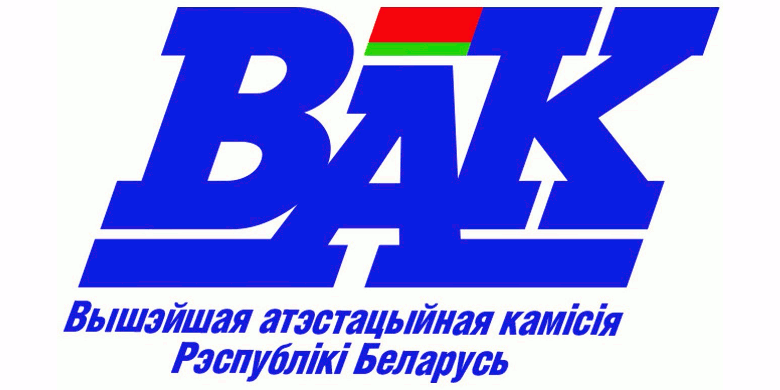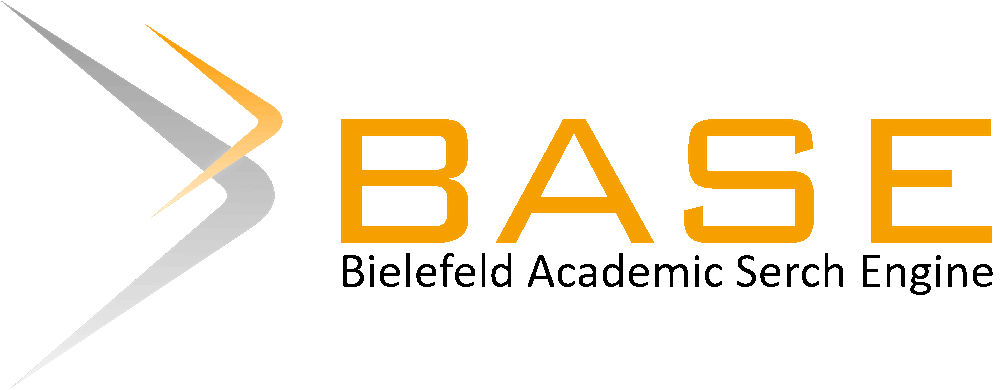Biochemical parameters of blood in poikilo- and homoiothermal animals using chlorella
Keywords:
chlorella suspension, biochemical parameters, African catfish, Lena sturgeon, calves, seleniumAbstract
Unicellular freshwater microalgae of the Chlorella vulgaris species are characterized by relative ease of cultivation, high productivity and high content of proteins and other valuable components. This is due to the presence of pigments, antioxidants, provitamins, vitamins, and a growth agent known as "chlorella growth factor" (CGF), which can stimulate the immune system, increase feed intake and utilization, and promote reproduction. Valuable components are rich not only in the cell mass of chlorella, but also in the culture medium used for its cultivation.
To date, chlorella suspension is widely used to improve compound of mixed fodders. As is known, the efficiency of fish rearing directly depends on the use of high-quality, balanced and inexpensive feeds, however, the use of new mixed fodders requires control of the physiological state of fish, one of the criteria of which is the biochemical composition of the blood. In this work, we studied the effectiveness of the use of domestic mixed fodders with a suspension of chlorella when growing fry of African catfish and Lena sturgeon.
It is known that chlorella suspension can be enriched with organic selenium, which plays an essential role in immunoregulation in the organism.
The article considers the effect of a chlorella suspension grown on a nutrient medium enriched with sodium selenite on the level of total protein, globulins, albumins, transaminases, and phosphatase in the blood of homoiothermal animals.
It was established that the introduction of chlorella suspension and chlorella suspension with the addition of selenium into the diet of calves activated physiological processes and contributed to the optimization of some of their biochemical parameters. A pronounced effect is observed when chlorella suspension enriched with selenium is added to milk. As a result of the experiments on the use of chlorella suspension in the rearing of poikilothermal animals, it was found that the algae has a significant effect on the change in the activity of aspartate aminotransferase in the fry Lena sturgeon.
References
Блинохватов, А. Ф. Селен в биосфере / А. Ф. Блинохватов, Г. В. Денисова. – Пенза : Пенз. гос. с.-х. акад., 2001. – 323 с.
Борознов, С. Л. Биохимические показатели крови высокопродуктивных коров и новорожденных телят / С. Л. Борознов, А. П. Курдеко, А. А. Мацинович // Учен.зап.УО «Витеб. гос. акад. ветеринар.медицины». – 2006. – Т. 42, вып. 1, ч. 1. – С. 10–13.
Власов, В. А. Пробиотик в комбикорме для клариевого сома / В. А. Власов // Комбикорма. – 2013. – № 4.– С. 61–63.
Григорьева, Т.Е. Изоферментный состав щелочной фосфатазы сыворотки крови крупного рогатого скота в зависимости от возраста и физиологического состояния животных / Т. Е. Григорьева, Е. В. Юрьева, Г. И. Иванов // С.-х. биология. – 1991. – № 4. – С. 40–43.
Громыко, Е. В. Оценка состояния организма коров методами биохимии / Е. В. Громыко // Экол. вестн. Сев. Кавказа. – 2005. – № 2. – С. 80–94.
Действие биогелей из морских водорослей на облигатную микрофлору кишечника / Н. М. Аминина [и др.] // Здоровье. Мед. экология. Наука. – 2009. – №4-5. – С. 20–23.
Кривошеин, В. В. Гематологические и интерьерные показатели осетров при тепловодной биотехнологии / В. В. Кривошеин // Вестник КГУ им. Н. А. Некрасова. – 2006. – № 8. – С. 10–12.
Кудрявцев, А. А. Исследование крови в ветеринарной диагностике / А. А. Кудрявцев.– 2-е изд., доп. и перераб. – М. : Селхозгиз, 1952–1953. – 2 т.
Мухрамова, А. А. Оценка состояния молоди русского осетра по рыбоводно-биологическим параметрам и биохомическим показателям крови после кормления экспериментальными кормами / А. А. Мухрамова // Вестник КазНУ. Сер. экологическая. – 2012. – № 1 (33). – С. 103–106.
Овсянников, А. И. Основы опытного дела в животноводстве / А. И. Овсянников. – М. : Колос, 1976. – 303 с.
Особенности накопления селена и его биологическая роль у водорослей (обзор) / О. И. Боднар [и др.] // Гидробиол. журн. – 2014. – Т. 50, № 5. – С. 72–79.
Сальникова, М. Я. Хлорелла – новый вид корма / М. Я. Сальникова. – М. : Колос, 1977. – 95 с.
Сорокина, Н. В. Влияние комбикорма с тыквенным жмыхом на рост и физиологическое состояние стерляди / Н. В. Сорокина, А. Р. Лозовский // Естественные науки. – 2010. – № 4 (33). – С. 74–79.
Станчев, П. И. Экзометаболиты водорослей и их биологически активные вещества / П. И. Станчев // Гидробиология. – 1980. – № 10. – С. 70–77.
Тимошко, М.А. Заселенность микрофлорой пищеварительного тракта отдельных видов сельскохозяйственных животных / М. А. Тимошко // Микрофлора пищеварительного тракта молодняка сельскохозяйственных животных / М. А. Тимошко ; отв. ред. И. Г. Пивняк. – Кишинев,1990. – Гл. 2. – С.31–42.
Третьяков, Е. А. Применение суспензии хлореллы в питании ремонтных телок / Е. А. Третьяков, М. В. Механикова, Т. С. Кулакова // Молодой ученый. – 2016 – № 6-5.– С. 102–105.
A little green helpmate / S. Jahn [et al.] // NeueLandwirtschaf. – 2005. – Vol. 1. – P. 64–65.
Abalaka, S. E. Evaluation of the haematology and biochemistry of Clarias gariepinus as biomarkers of environmental pollution in Tiga dam, Nigeria / S. E. Abalaka // Brazilian archives of biology and technology. – 2013. – Vol. 56, № 3. – P. 371–376.
Bender, J. Uptake and transformation of metals and metalloids by microbial mats and their use in bioremediation / J. Bender, R. F. Lee, P. Phillips // J. Industr. Microbiol. – 1995. – Vol. 14, № 2. – P. 113–118.
Doucha, J. The chlorella programme in the Czech Republic [Electronic resource] / J. Doucha / ResearchGate.–Mode of access: https://www.researchgate.net/publication/258697445_The_Chlorella_Programme_in_the_Czech_Republic. – Date of access: 16.04.2022.
Effect of dietary natural supplements on immune response and mineral bioavailability in piglets after weaning / I. Taranu [et al.] // Czech J. of Animal Science. – 2012. – Vol. 57, № 7. – P. 332–347.
Efficacy of Chlorella pyrenoidosa to ameliorate the hepatotoxic effects of aflatoxin B1 in broiler chickens / Z. Subhani [et al.] // Pakistan Veterinary J. – 2018. – Vol. 38, № 1. – P. 13–18.
Hepatoprotection of chlorella against carbon tetrachloride-induced oxidative damage in rats / H.-Y. Peng [et al.] // In Vivo. – 2009. – Vol. 23, № 5. – P. 747–754.
Jahn, S. Investigation of economic efficiency from Chlorella biomass in the piglet production / S. Jahn, D. Sparborth, H. J. Thieme // Abstracts of 2nd European Workshop Biotechnology of Microalgae, Bergholz-Rehbrücke, 11–12 Sept. 1995 / IGV Inst. Für Getreideverarbeitung [et al.]. – Bergholz-Rehbrücke, 1995. – P. 108–111.
Ježek, J. The dynamics of serum immunoglobulin concentrations and hematological and biochemical parameters in the period to the age of 24 weeks in diferently reared calves / J. Ježek. – Slovenija ; Ljubljana : Univerza v Ljubljani, Veterinarska fakulteta, 2007. – 172 p.
Kaneko, J. J. Serum proteins and the disproteinemias / J. J. Kaneko // Clinical biochemistry of domestic animals / ed.: J. J. Kaneko, J. W. Harvey, M. L. Bruss. – 5th ed. – San Diego, 1997. – P. 117–138.
Low selenium status of inhabitants of South Bohemia and its relation to iodine and thyroid hormone metabolism / J. Kvíčala [et al.] // Biomarkers a. Environment. – 1997. – Vol. 1. – P. 12–20.
Oyamada, N. Methylation of inorganic selenium compounds by freshwater green algae Ankistrodesums sp., Chlorella vulgaris and Selenastrum sp. / N. Oyamada, G. Takahashi, M. Ishizaki // Eisei Kagaku. – 1991. – Vol. 37, № 2. – P. 83–88.
Price, N. M. Specific selenium-containing macromolecules in the marine diatom Thalassiosira pseudonana / N. M. Price, P. J. Harrison // Plant Physiology. – 1988. – Vol. 86, № 1. – P. 192–199.
Riedel, G. F. Uptake, transformation, and impact of selenium in freshwater phytoplankton and bacterioplankton communities / G. F. Riedel, J. G. Sanders, C. C. Gilmour // Aquatic Microbial Ecology. – 1996.– Vol. 11, № l. – P. 43–51.
Storandt, R. Algae in animal production / R. Storandt, O. Pulz, H. Franke // Tierernährung–Ressourcen und neueAufgaben : Expo 2000, Hannover, 15-16 Juni 2000 :Workshop / Bundesforschungsanstalt für Landwirtschaft, Tierärztliche Hochschule Hannover, Inst. Für Tierernährung ; hrsg. J. Kamphues. – Braunschweig, 2000. –S. 31.
Synthesis and structure characterization of selenium metabolites / T. W.-M. Fan [et al.] // Analyst. – 1998. – Vol. 123, № 5. – P. 875–884.
The effects of Chlorella vulgaris supplementation on growth performance, blood characteristics, and digestive enzymes in Koi (Cyprinus carpio) / M. Khani [et al.] // Iranian J. of Fisheries Sciences. – 2017. – Vol. 16, № 2. – P. 832–834.
Yamaoka, Y. Biosynthesis of glutathione and environmental factors relating to selenium accumulation by algae / Y. Yamaoka, O. Takimura, H. Fuse // Program of the First International Marine Biotechnology Conference (IMBC’89). – Tokyo, 1989. – P. 63.
Yan, L. Effect of fermented Chlorella supplementation on growth performance, nutrient digestibility, blood characteristics, fecal microbial and fecal noxious gas content in growing pigs / L. Yan, S. U. Lim, I. H. Kim //Asian-Australasian J. of Animal Sciences. – 2012. – Vol. 25, № 12. – P. 1742–1747.
References
Blinohvatov, A. F. Selen v biosfere [Selenium in the biosphere]. Penza, Penz. gos. s.-h. akad., 2001, 323 p. (In Russian)
Boroznov, S. L. Biohimicheskie pokazateli krovi vysokoproduktivnyh korov i novorozhdennyh telyat [Biochemical parameters of blood of highly productive cows and newborn calves]. Uchen. zap. UO «Viteb. gos. akad. veterinar. mediciny» [Uchen.zap. UO “Viteb. state acad. veterinarian. medicine"], 2006, no. 42, iss. 1, ch. 1, pp. 10–13. (In Russian)
Vlasov, V. A. Probiotik v kombikorme dlya klarievogo soma [Probiotic in feed for clariid catfish]. Kombikorma [Compound feed], 2013, no. 4, pp. 61–63. (In Russian)
Grigor'eva, T.E. Izofermentnyj sostav shchelochnoj fosfatazy syvorotki krovi krupnogo rogatogo skota v zavisimosti ot vozrasta i fiziologicheskogo sostoyaniya zhivotnyh [Isoenzyme composition of alkaline phosphatase in blood serum of cattle depending on the age and physiological state of animals]. S.-h. biologiya [Agricult. biology], 1991, no. 4, pp. 40–43. (In Russian)
Gromyko, E. V. Ocenka sostoyaniya organizma korov metodami biohimii [Evaluation of the state of the body of cows by biochemistry methods]. Ekol.vestn. Sev. Kavkaza [Ecological Vestn. North Caucasus], 2005, no. 2, pp. 80–94. (In Russian)
Dejstvie biogelej iz morskih vodoroslej na obligatnuyu mikrofloru kishechnika [The effect of seaweed biogels on the obligate intestinal microflora]. Zdorov'e. Med. ekologiya. Nauka [Health. Medical ecology. The science.], 2009, no. 4–5, pp. 20–23. (In Russian)
Krivoshein, V. V. Gematologicheskie i inter'ernye pokazateli osetrov pri teplovodnoj biotekhnologii [Hematological and interior indicators of sturgeon in warm-water biotechnology]. Vestnik KGU im. N. A. Nekrasova [Bulletin of KGU im. N. A. Nekrasova], 2006, no. 8, pp. 10–12. (In Russian)
Kudryavcev, A.A. Issledovanie krovi v veterinarnoj diagnostike [Blood study in veterinary diagnostics]. Moscow, Selhozgiz, 1952–1953. – 2 t. (In Russian)
Muhramova, A. A. Ocenka sostoyaniya molodi russkogo osetra po rybovodno-biologicheskim parametram i biohomicheskim pokazatelyam krovi posle kormleniya eksperimental'nymi kormami [Assessment of the state of Russian sturgeon juveniles according to fish-breeding and biological parameters and biochemical parameters of blood after feeding with experimental feeds]. Vestnik KazNU. Ser. ekologicheskaya [Bulletin of KazNU. Ser.ecological], 2012, no. 1 (33), pp. 103–106. (In Russian)
Ovsyannikov, A. I. Osnovy opytnogo dela v zhivotnovodstve [Fundamentals of experimental work in animal husbandry]. Moscow, Kolos, 1976, 303 p. (In Russian)
Osobennosti nakopleniya selena i ego biologicheskaya rol' u vodoroslej (obzor) [Features of selenium accumulation and its biological role in algae (review)]. Gidrobiol. zhurn. [Gidrobiol. J.], 2014, iss. 50, no. 5, pp. 72–79. (In Russian)
Sal'nikova, M. YA. Hlorella – novyj vid korma [Chlorella is a new type of feed]. Moscow, Kolos, 1977, 95 p. (In Russian)
Sorokina, N. V. Vliyanie kombikorma s tykvennym zhmyhom na rost i fiziologicheskoe sostoyanie sterlyadi [Influence of compound feed with pumpkin cake on the growth and physiological state of sterlet]. Estestvennye nauki [Natural Sciences], 2010, no. 4 (33), pp. 74–79. (In Russian)
Stanchev, P. I. Ekzometabolity vodoroslej i ih biologicheski aktivnye veshchestva [Exometabolites of algae and their biologically active substances]. Gidrobiologiya [Hydrobiology], 1980, no. 10, pp. 70–77. (In Russian)
Timoshko, M.A. Zaselennost' mikrofloroj pishchevaritel'nogo trakta otdel'nyh vidov sel'skohozyajstvennyh zhivotnyh [Population of the microflora of the digestive tract of certain types of farm animals]. Mikroflora pishchevaritel'nogo trakta molodnyaka sel'skohozyajstvennyh zhivotnyh [Microflora of the digestive tract of young farm animals], Kishinev, 1990, Ch. 2, pp. 31–42. (In Russian)
Tret'yakov, E. A. Primenenie suspenzii hlorelly v pitanii remontnyh telok [The use of chlorella suspension in the nutrition of replacement heifers]. Molodoj uchenyj [Young scientist], 2016, no. 6–5, pp. 102–105. (In Russian)
A little green helpmate / S. Jahn [et al.] // Neue Landwirtschaf. – 2005. – Vol. 1. – P. 64–65.
Abalaka, S. E. Evaluation of the haematology and biochemistry of Clarias gariepinus as biomarkers of environmental pollution in Tiga dam, Nigeria / S. E. Abalaka // Brazilian archives of biology and technology. – 2013. – Vol. 56, № 3. – P. 371–376.
Bender, J. Uptake and transformation of metals and metalloids by microbial mats and their use in bioremediation / J. Bender, R. F. Lee, P. Phillips // J. Industr. Microbiol. – 1995. – Vol. 14, № 2. – P. 113–118.
Doucha, J. The chlorella programme in the Czech Republic [Electronic resource] / J. Doucha / ResearchGate. –Mode of access: https://www.researchgate.net/publication/258697445_The_Chlorella_Programme_in_the_Czech_Republic. – Date of access: 16.04.2022.
Effect of dietary natural supplements on immune response and mineral bioavailability in piglets after weaning / I. Taranu [et al.] // Czech J. of Animal Science. – 2012. – Vol. 57, № 7. – P. 332–347.
Efficacy of Chlorella pyrenoidosa to ameliorate the hepatotoxic effects of aflatoxin B1 in broiler chickens / Z. Subhani [et al.] // Pakistan Veterinary J. – 2018. – Vol. 38, № 1. – P. 13–18.
Hepatoprotection of chlorella against carbon tetrachloride-induced oxidative damage in rats / H.-Y. Peng [et al.] // In Vivo. – 2009. – Vol. 23, № 5. – P. 747–754.
Jahn, S. Investigation of economic efficiency from Chlorella biomass in the piglet production / S. Jahn, D. Sparborth, H. J. Thieme // Abstracts of 2nd European Workshop Biotechnology of Microalgae, Bergholz-Rehbrücke, 11–12 Sept. 1995 / IGV Inst. Für Getreideverarbeitung [et al.]. – Bergholz-Rehbrücke, 1995. – P. 108–111.
Ježek, J. The dynamics of serum immunoglobulin concentrations and hematological and biochemical parameters in the period to the age of 24 weeks in differently reared calves / J. Ježek. – Slovenija ; Ljubljana : Univerza v Ljubljani, Veterinarska fakulteta, 2007. – 172 p.
Kaneko, J. J. Serum proteins and the disproteinemias / J. J. Kaneko // Clinical biochemistry of domestic animals / ed.: J. J. Kaneko, J. W. Harvey, M. L. Bruss. – 5th ed. – San Diego, 1997. – P. 117–138.
Low selenium status of inhabitants of South Bohemia and its relation to iodine and thyroid hormone metabolism / J. Kvíčala [et al.] // Biomarkers a. Environment. – 1997. – Vol. 1. – P. 12–20.
Oyamada, N. Methylation of inorganic selenium compounds by freshwater green algae Ankistrodesums sp., Chlorella vulgaris and Selenastrum sp. / N. Oyamada, G. Takahashi, M. Ishizaki // Eisei Kagaku. – 1991. – Vol. 37, № 2. – P. 83–88.
Price, N. M. Specific selenium-containing macromolecules in the marine diatom Thalassiosira pseudonana / N. M. Price, P. J. Harrison // Plant Physiology. – 1988. – Vol. 86, № 1. – P. 192–199.
Riedel, G. F. Uptake, transformation, and impact of selenium in freshwater phytoplankton and bacterioplankton communities / G. F. Riedel, J. G. Sanders, C. C. Gilmour // Aquatic Microbial Ecology. – 1996. – Vol. 11, № l. – P. 43–51.
Storandt, R. Algae in animal production / R. Storandt, O. Pulz, H. Franke // Tierernährung–Ressourcen und neueAufgaben : Expo 2000, Hannover, 15-16 Juni 2000 :Workshop / Bundesforschungsanstalt für Landwirtschaft, Tierärztliche Hochschule Hannover, Inst. Für Tierernährung ; hrsg. J. Kamphues. – Braunschweig, 2000. –S. 31.
Synthesis and structure characterization of selenium metabolites / T. W.-M. Fan [et al.] // Analyst. – 1998. – Vol. 123, № 5. – P. 875–884.
The effects of Chlorella vulgaris supplementation on growth performance, blood characteristics, and digestive enzymes in Koi (Cyprinus carpio) / M. Khani [et al.] //Iranian J. of Fisheries Sciences. – 2017. – Vol. 16, № 2. – P. 832–834.
Yamaoka, Y. Biosynthesis of glutathione and environmental factors relating to selenium accumulation by algae / Y. Yamaoka, O. Takimura, H. Fuse // Program of the First International Marine Biotechnology Conference (IMBC’89). – Tokyo, 1989. – P. 63.
Yan, L. Effect of fermented Chlorella supplementation on growth performance, nutrient digestibility, blood characteristics, fecal microbial and fecal noxious gas content in growing pigs / L. Yan, S. U. Lim, I. H. Kim //Asian-Australasian J. of Animal Sciences. – 2012. – Vol. 25, № 12. – P. 1742–1747.













